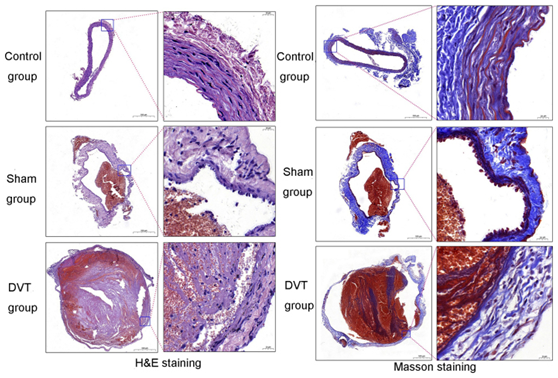A rat model of deep vein thrombosis
Deep venous thrombosis (DVT) is a thrombus formed in the deep veins, often in the veins deep in the lower limbs or pelvis, and sometimes in the veins of the upper limbs. The most serious complication of DVT is the shedding of thrombus and its entry into the lungs, which leads to pulmonary embolism (PE). DVT and PE are collectively called venous thromboembolic disease (VTE), which seriously endangers human health. The global annual incidence rate is about 0.1%. According to statistics, over 90% of PE patients come from deep vein thrombosis, and over 5 million people die from PE every year worldwide. DVT has the characteristics of high incidence rate and high mortality, and the research on the formation mechanism and treatment has received more and more attention. The establishment of animal models of DVT can further explore the pathological process of thrombosis or the process of thrombolysis. It is an important means to study the pathogenesis of venous thrombosis in vivo and evaluate various treatment methods, which is very helpful for the study of the formation development dissolution process of venous thrombosis.

Observation indicators
Observe lower limb swelling with the naked eye; Biochemical detection of the expression of D-dimer and fibrinogen in plasma; ELISA detection of ICAM-1, vWF and other factors in blood; HE staining was used to observe the pathology of the inferior vena cava tissue; Observe fibrosis by Masson staining; Pulmonary micro CT observation for bleeding and pulmonary embolism.
Partial Results Display



